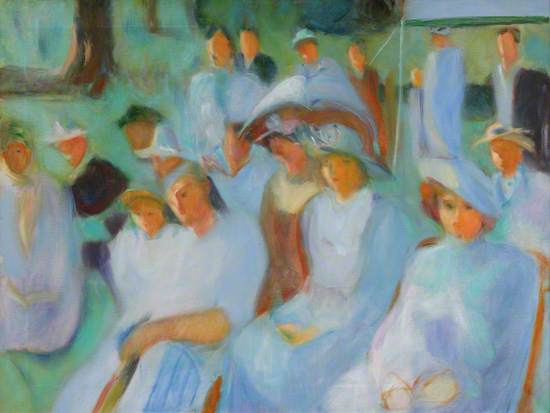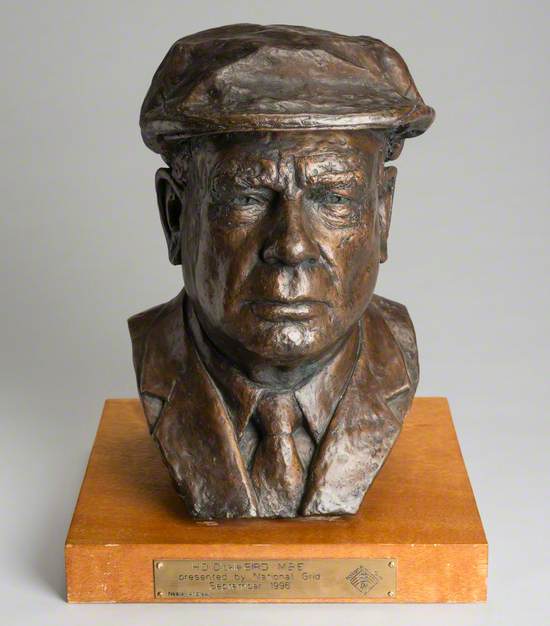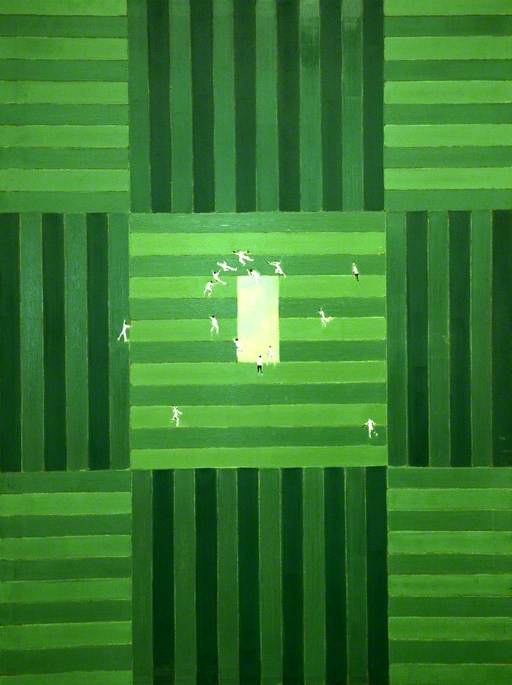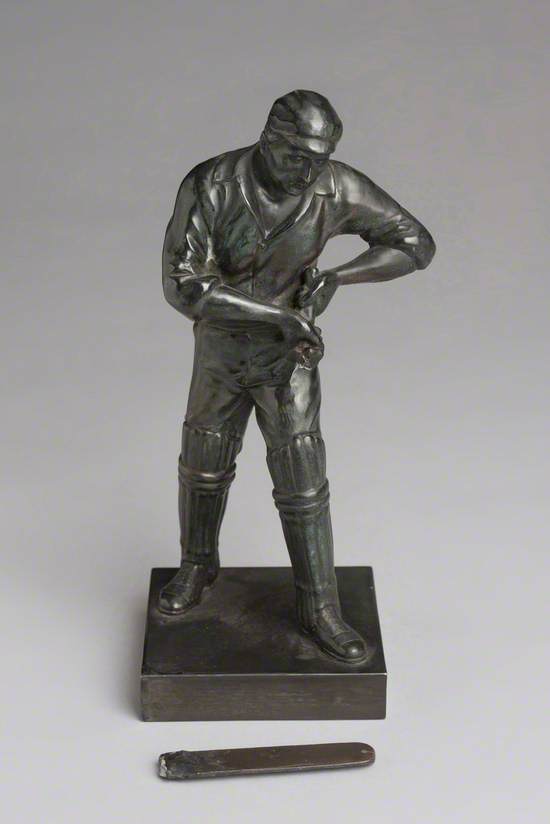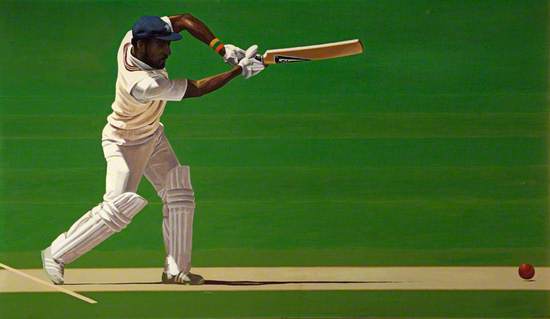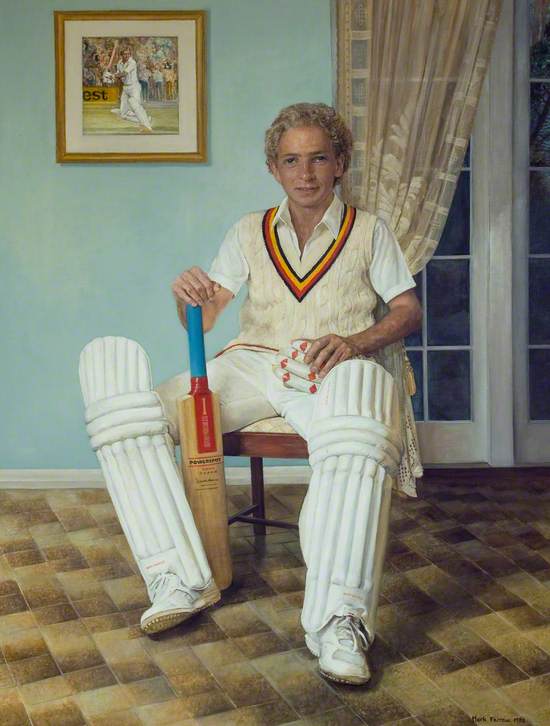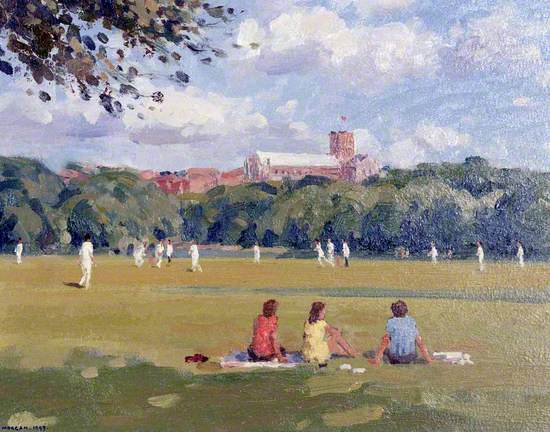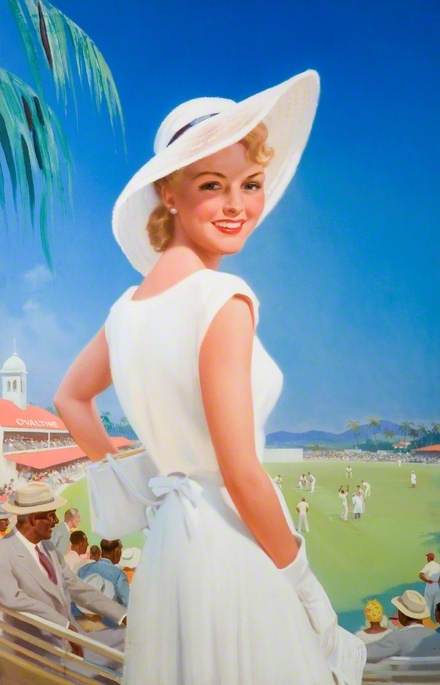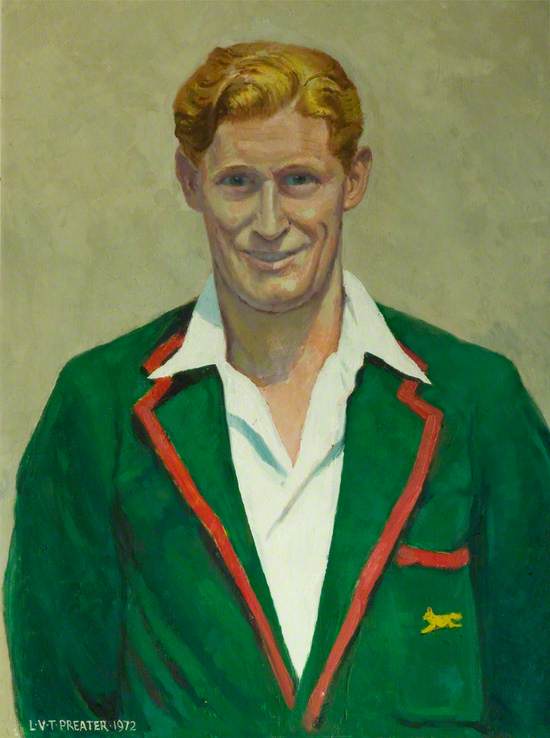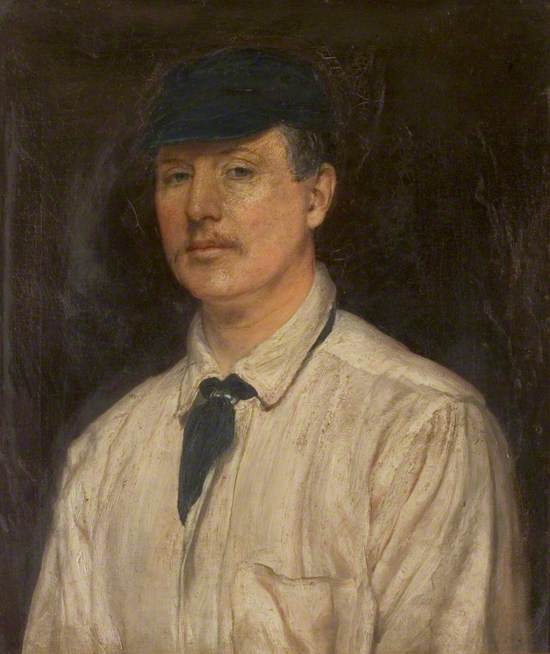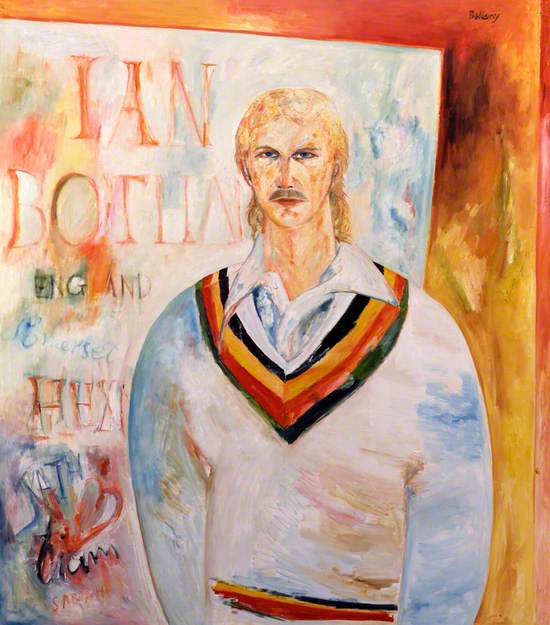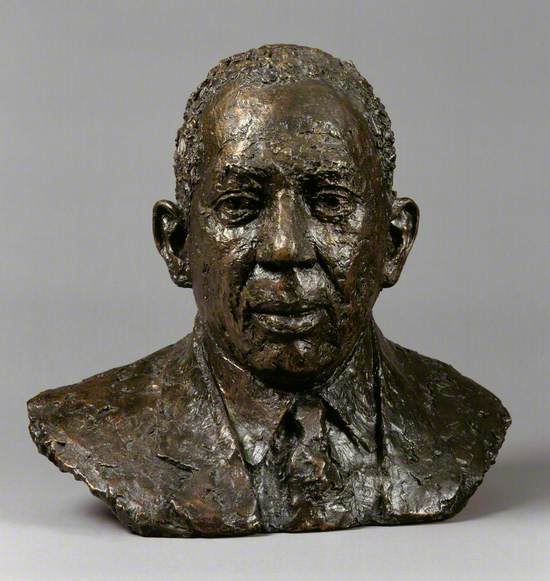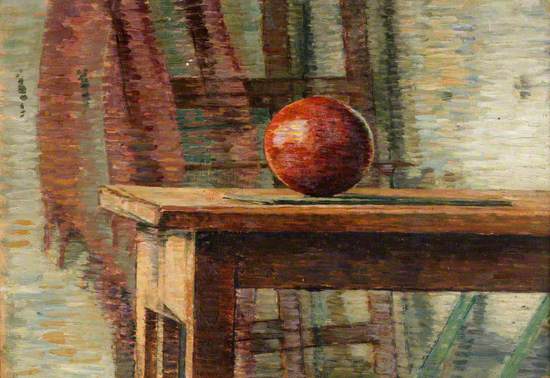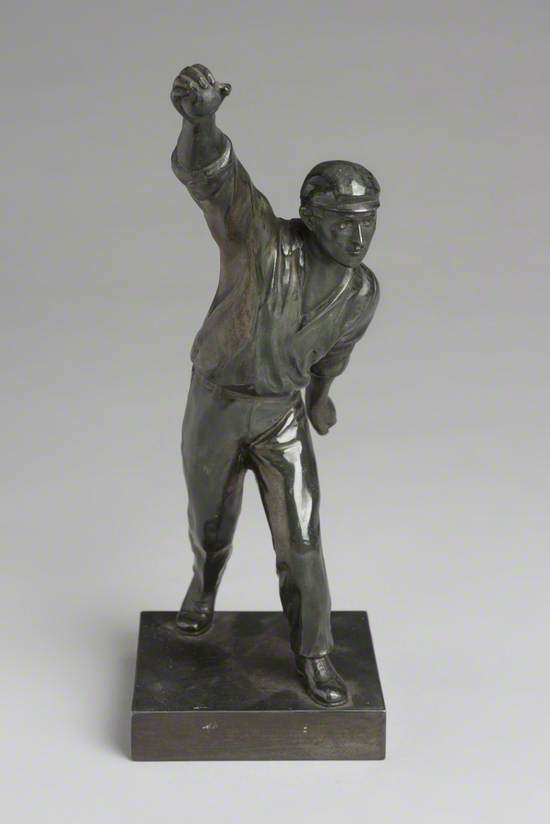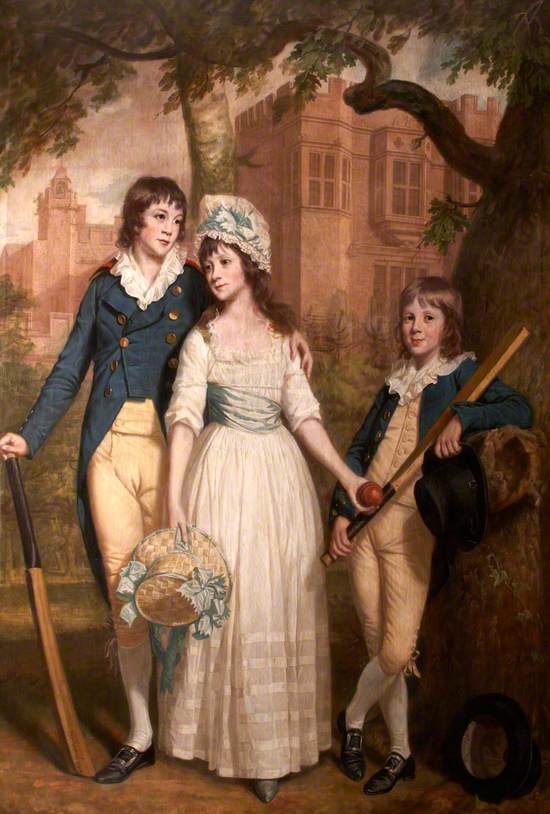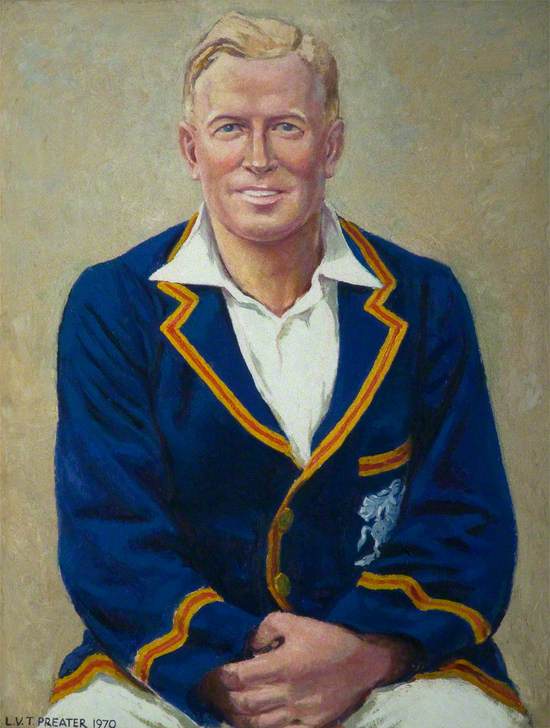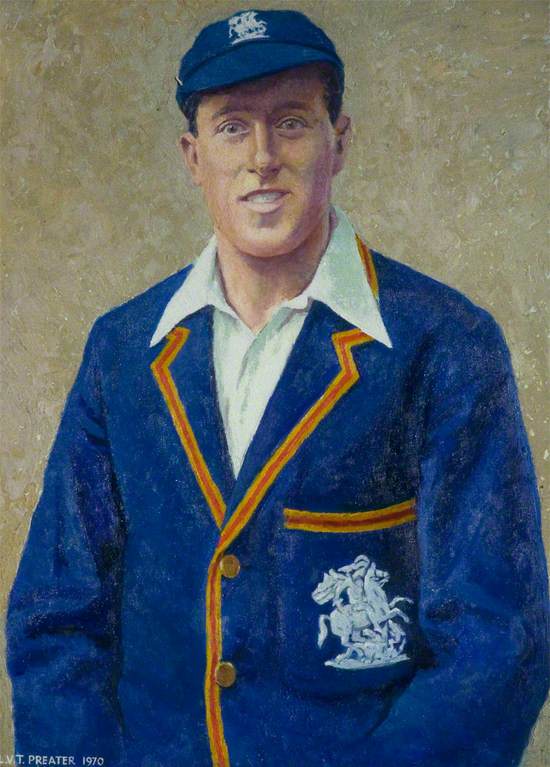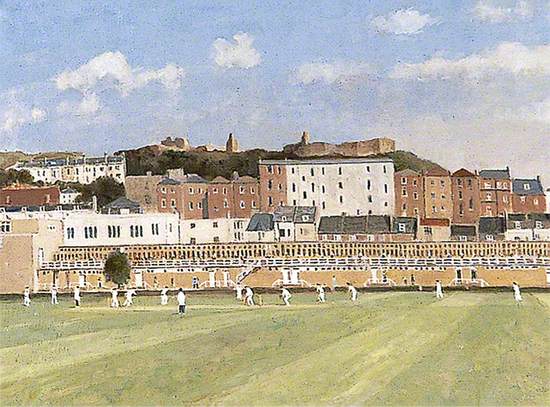I had withdrawal symptoms from the lack of cricket during lockdown in 2020. In a normal summer, I would have been following domestic and international cricket on the radio and television, as well as attending local matches in person with my family. As an ECB-qualified cricket scorer, I've spent many hours at the edge of a cricket pitch, in all weathers, watching and scoring all manner of matches - from under 9s to adults. This storyline imagines a virtual cricket match, through the artworks on Art UK. Grab a woolly hat and scarf (you'll need them) and set your deckchair down by the boundary.
The players warm up
The teams have arrived at the ground and they've put on their cricket whites. It's time for a warm up, to get the muscles moving and practice catching the ball.
The Lord's Nursery Ground is where international cricketers warm up before a match. Most cricketers don't get the opportunity to practice in such beautiful surroundings. The edge of the pitch will do. Sometimes a passing dog will join in.
Lawrence Toynbee (1922–2002)
Oil on board
H 82.5 x W 122 cm
York Museums Trust
The cricket pavilion
This multi-use building is where the players change, tea is served and the scorers sit. If you're lucky they'll also have a working bar.
I've seen a few with slats missing from a wooden trellis like this, where they've been angrily hit by the batter that's just been given out.
Gary Sargeant (b.1939)
Oil on canvas
H 101 x W 75 cm
University of Hull Art Collection
Scoring the match
The unsung heroes of the cricket match are the scorers, as without their detailed record of every ball of the match, no-one would know who has won! They have to watch every second of play and keep an eye out for hand signals from the umpires. Sadly there aren't any artworks immortalising the hard work of scorers, but this one shows some people concentrating on a match, as scorers have to do.
Most scorers in the UK are covered in layers of clothing, hats, scarves and blankets, as it's often freezing, especially at the beginning and end of the season. The most layers I've worn in one go is nine.
The Umpire
Every match needs two umpires, one at the bowler's end and one at square leg (at a right angle to the facing batter). They decide if the delivery of the ball is legal and whether the batter is out. They communicate with the scorers through a series of arm signals.
Dickie Bird is probably the best-known English Umpire, with a career spanning nearly 30 years. He umpired in 66 Test matches (a world record at the time) and 69 One Day Internationals, including 3 World Cup Finals.
Neale Andrew (b.1958)
Bronze
H 36 x W 23 x D 25 cm
Experience Barnsley Museum and Discovery Centre
Play starts
The captains have tossed a coin to decide who bats first. Their decisions will be based on the weather, the state of the pitch and who they have playing for them that week.
The umpires will walk out first, followed by the fielding team and the first two batters. The fielding captain will position their fielders. The opening bowler goes to the start of their run up and the umpire calls for play to commence.
The batting side
There are eleven players in each team. The captain decides the batting order in advance, but it can change during the match, depending on what happens.
This chap seems to have broken his bat and been left holding just the handle. Hopefully he's got a spare in his kit bag.
unknown artist
Spelter
H 25 x W 11 x D 10 cm
Rotherham Heritage Services
Harold Gimblett (1914–1978)
Our opening batter is Harold Gimblett, who played for Somerset and England. He was known for his fast scoring as an opening batsman, so hopefully he'll get them off to a flyer.
Gimblett made his first-class debut in 1935, scoring a century for Somerset in just 63 minutes, the fastest century of the season. His obituary in Wisden said: 'The start of his career was so sensational that any novelist attributing it to his hero would have discredited the book'.
John Lowe (b.1919)
Oil on canvas
H 94 x W 43.5 cm
Somerset Cricket Museum
William Gilbert ('W. G.') Grace
W. G. Grace was all-round cricketer, excelling at batting, bowling and fielding. He usually opened the batting in the matches he played for England, Gloucestershire and Marylebone Cricket Club. Grace played first-class cricket from 1865 to 1908 (44 seasons).
Archibald John Stuart-Wortley (1849–1905) (attributed to)
Oil on canvas
H 90.2 x W 69.9 cm
National Portrait Gallery, London
Viv Richards (b.1952)
Grace has been caught in the slips, so the next batter is Sir Isaac Vivian Alexander Richards, one of the greatest batsmen of all time. Richards was captain of the West Indies from 1984 to 1991. He also played county cricket in England, representing Somerset from 1974 to 1986. Richards scored the fastest century in Test history (56 balls) in 1986, a record that wasn't broken until 2014.
Michael Tarr (b.1946)
Acrylic on canvas
H 70 x W 123 cm
Somerset Cricket Museum
David Gower (b.1957)
Gimblett has been bowled, so next in is David Gower, captain of England during the 1980s. He played county cricket for Leicestershire from 1975–1989.
Gower holds the record of 119 consecutive innings without registering a duck in Test cricket. He's also known for an incident in 1991 when he buzzed an England warm-up match in Australia with a biplane.
Anton Mark Ferrow (1922–1991)
Oil on canvas
H 256 x W 128 cm
Leicestershire County Cricket Club
Charles Burgess Fry (1872–1956)
Gower is out for a duck. In at five is C. B. Fry, a very interesting character! He represented England at both cricket and football. He played in an FA Cup Final for Southampton and equalled the then-world record for the long jump. He was apparently offered the throne of Albania, which he turned down. His party trick was leaping from a stationary position backwards onto a mantelpiece.
Thomas Fairfax (b.1981)
Oil on canvas
H 106.7 x W 86.4 cm
Wadham College, University of Oxford
Watching the match
The players have stopped for a drink, (watered down orange squash), so we'll have a look at the spectators. This idyllic scene is typical of playing cricket in the UK in the summer, sitting on a blanket, with a picnic. If those clouds get thicker though and it starts to rain, they might be running back to the car.
Ronald Morgan (1936–2019)
Oil on canvas
H 22.3 x W 29.8 cm
Parliamentary Art Collection
Not watching the match
Unlike this lady, spectators should keep an eye on the action on the field, as there's always the possibility of being hit by the ball. If it goes for six, make sure you aren't in the way. I once had a ball come straight at me, very fast, and I only just got out of the way before it smashed the bench I was sitting on to pieces.
unknown artist
Oil on canvas
H 92 x W 61 cm
Dacorum Heritage Trust Ltd
Maurice Tompkin (1919–1956)
Fry is out straight after drinks, so in comes Maurice Tompkin, another accomplished sportsman who played first-class cricket for Leicestershire and professional football for Bury, Leicester City, Huddersfield Town and Kettering Town. Sadly, he never played for the MCC or England, as he died of cancer at the age of 37.
Leonard Victor Thomas Preater (1908–1983)
Oil on canvas
H 59 x W 45 cm
Leicestershire County Cricket Club
Women in cricket
Tompkin is out LBW, so next in is Rachael Heyhoe Flint (1939–2017). Unfortunately, there aren't any artworks of women cricketers on Art UK at the moment, so this painting will have to do. (Hopefully that will change in the future).
Heyhoe Flint played for the English women's cricket team from 1960 to 1982, captaining the side from 1966 to 1978. She was the first female cricketer to hit a six in a Test match. She became Baroness Heyhoe Flint of Wolverhampton in 2011.
Henry Stockley (1892–1982)
Oil on wooden panel
H 47 x W 47.5 cm
Salford Museum & Art Gallery
Richard Daft (1835–1900)
Nottingham-born Richard Daft is in at eight, who played for Nottinghamshire from 1858 to 1891. He was one of the best batters of his day. After his cricketing career was over, he ran a pub near the Nottingham cricket ground called the Trent Bridge Inn.
George Francis Miles (1852–1891)
Oil on canvas
H 61 x W 39 cm
Nottinghamshire County Cricket Club
Joseph Hardstaff Junior (1911–1988)
Another Nottinghamshire native, Joseph Hardstaff Junior, is in next. One of his best seasons at home was 1937, when he posted over 2,500 runs, including three double hundreds. He was one of Wisden Cricketers of the Year in 1938.
unknown artist
Oil on canvas
H 56 x W 40 cm
Nottinghamshire County Cricket Club
Ian Botham (b.1955)
The standard of batters in this team has been so high that one of the greatest all-rounders in cricket has been put in at number ten. He probably wouldn't like that.
Botham played most of his first-class cricket for Somerset and played for England from 1977 to 1992. In 1980, he became the second player in Test history to complete the 'match double' of scoring 100 runs and taking 10 wickets in the same match.
John Bellany (1942–2013)
Oil on canvas
H 172.7 x W 152.4 cm
National Portrait Gallery, London
Younger cricketers
From experience of local club matches, they often have younger players in the side and they sometimes end up at the bottom of the order. For this reason, I've put young Charles in at eleven.
His bat looks a bit different to the ones used today, but is typical of the curved bats played with in the 18th century. It doesn't do him any good though, as he misses the ball and is bowled. The first innings is over.
Francis Cotes (1726–1770)
Oil on canvas
H 90.8 x W 70.5 cm
Yale Center for British Art
Tea
Everyone heads back to the pavilion for tea, which can be a highlight or low-light of the day. If we're lucky there will be a good selection of fresh sandwiches, fruit and cake, and cups of tea.
The worst cricket tea I ever had was at a club in Derbyshire (which will remain nameless) which served up two varieties of sandwich - beetroot or beetroot and cheese. Disgusting.
Anna Todd (b.1964)
Acrylic on board
H 214 x W 122 cm
Withington Community Hospital
Second innings
The players are full of food and have headed back to the pitch. Some have put a few biscuits in their pockets to eat while they are fielding. (I know for the fact that this happens...)
Wicketkeeper
Every team has a wicketkeeper, who stands behind the stumps, ready to take a catch, stump the batter out and run out a batter. The wicket-keeper is the only member of the fielding side allowed to wear gloves and external leg guards.
unknown artist
Spelter
H 18 x W 11 x D 13 cm
Rotherham Heritage Services
Mordecai Sherwin (1851–1910)
Our wicketkeeper is Mordecai Sherwin, who played in this position for Nottinghamshire from 1878 to 1896. He captained the side in 1887 and 1888. Sherwin was good at stopping balls, being also a professional footballer, playing in goal for Notts County from 1883 to 1888.
The name of Arthur Conan Doyle's character, Sherlock Holmes, is said to have been inspired partially by Sherwin, and partially by Frank Shacklock.
unknown artist
Oil on canvas
H 129 x W 104 cm
Nottinghamshire County Cricket Club
Learie Constantine (1901–1971)
All-rounder Learie Constantine is considered to be one of the best fielders of all time. He represented the West Indies from 1928 to 1938, taking the West Indies' first wicket in Test cricket.
Later in life, in 1954, Constantine qualified as a barrister, then entered politics. He served as Trinidad's High Commissioner to the United Kingdom from 1961 to 1964, becoming involved in issues relating to racial discrimination. Constantine was the UK's first black peer.
Karin Jonzen (1914–1998)
Bronze
H 43.8 cm
National Portrait Gallery, London
The Cricket Ball
Cricket balls are made from a cork core wound with string, covered with stitched-on leather. They are hard and solid, so it can really hurt if you get hit by one or don't catch it properly. Red balls are used for test matches and amateur cricket, with white balls used for one-day matches, so they can be seen against coloured clothing and under floodlights.
A new ball is used at the start at each innings. In village matches, they sometimes get lost in the undergrowth at the side of the pitch, so have to be replaced.
Evan Walters (1893–1951)
Oil on wood
H 30.5 x W 40.5 cm
Llyfrgell Genedlaethol Cymru / The National Library of Wales
Bowler
This bowler is about to let go of the ball that he's propelling towards the batter at the other end of the batting crease.
Some bowlers have a slow, spin action, whilst other rely on speed. The world record for the fastest delivery of a cricket ball is held by Pakistan's Shoaib Akhtar (100.2 mph).
unknown artist
Spelter
H 28.5 x W 10 x D 13 cm
Rotherham Heritage Services
Frank Woolley (1887–1978)
Our opening bowler is Frank Woolley, who had a first-class career from 1906 to 1938, playing for Kent and England. Another all-rounder in our team and a great fielder close to the wicket, he is the only player, other than wicketkeepers, to hold over 1,000 catches in a first-class career. As a bowler, Woolley's career total of wickets taken is the 27th highest.
Wilhelm Josef Soukop (1907–1995)
Bronze
H 40 x W 22 x D 27 cm
Maidstone Museum & Bentlif Art Gallery
Raymond Illingworth (b.1932)
Opening the bowling at the other end is Ray Illingworth. He took 2,072 wickets in his county cricket career for Yorkshire and Leicestershire. He also represented England as an all-rounder from 1958 to 1973. Illingworth is one of only a few players to have taken 2,000 wickets and made 20,000 runs in first-class cricket.
Leonard Victor Thomas Preater (1908–1983)
Oil on canvas
H 60 x W 45 cm
Leicestershire County Cricket Club
Mary Ann De la Pole and Myrtle Maclagan
Taking over from Woolley after a few overs is Mary Ann De La Pole, who looks like she could take on the batters with a bit of spin.
Again, there are no artworks of named women cricketers on Art UK yet, but if I could choose one to be immortalised in this way, I would vote for Myrtle Maclagan (1911–1993). She scored the first Test century in women's cricket (in 1935), making 119 for England against Australia. She was the first woman cricketer to open the batting, as well as open the bowling in the same test match. She also took 60 wickets in her career.
Thomas Beach (1738–1806)
Oil on canvas
H 228 x W 142 cm
National Trust, Antony
William Ewart Astill (1888–1948)
The next bowler is Ewart Astill who played for Leicestershire and England. He began his career in 1906, aged 18, but it was in the following season that he made an impression with his medium-paced right-hand bowling, taking 74 wickets for 16.58. In 1908, he was Leicestershire's chief bowler with 84 wickets.
Leonard Victor Thomas Preater (1908–1983)
Oil on canvas
H 59 x W 45 cm
Leicestershire County Cricket Club
George Geary (1893–1981)
George Geary has been loosening up near the boundary for the last few overs, trying to catch the Captain's eye. They've thrown him the ball and he's preparing his run up.
Geary was a medium-pace bowler for Leicestershire and England. His best season was 1929, when he took over 150 wickets and notched up 923 runs. He took 10 wickets for 18 runs in one match that year, at the time the best bowling figures in the history of first-class cricket.
Leonard Victor Thomas Preater (1908–1983)
Oil on canvas
H 60 x W 45 cm
Leicestershire County Cricket Club
The Last Over
It's been a tight match and it's all come down to the last over. The batting side need four to win. Myrtle Maclagan has bowled five dot balls. The last ball of the match needs to go over the boundary. The batter takes a big swing, but misses and the ball smashes into his stumps.
The players shake hands. They go off and get changed, some of them muttering under their breath about the Umpires' decisions.
I get £10 for scoring the match, which I spend in the bar.
William Francis Strickland (1912–2000)
Oil on board
H 47 x W 63.5 cm
Hastings Museum and Art Gallery
Cricket on Television
This is the closest I got to cricket in the summer of 2020, but watching re-runs of old matches on television (and listening to them on the radio) kept me going whilst we waited for restrictions to be lifted.
unknown artist
Oil on card
H 12.5 x W 12.5 cm
Moorfields Eye Hospital NHS Foundation Trust
Explore artists in this Curation
View all 24-
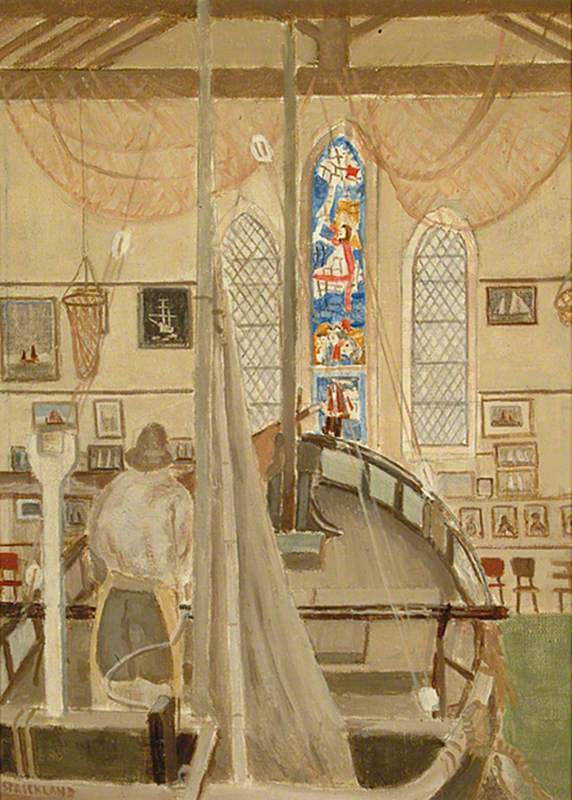 William Francis Strickland (1912–2000)
William Francis Strickland (1912–2000) -
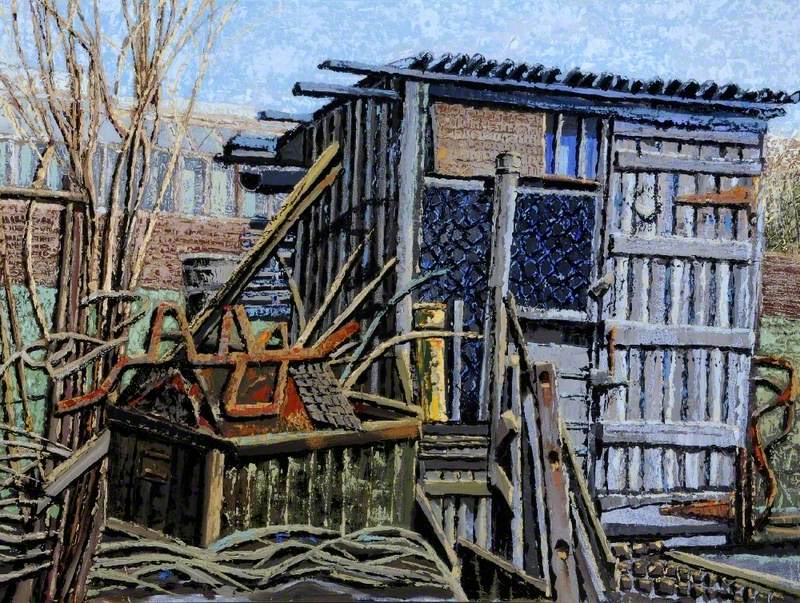 Gary Sargeant (b.1939)
Gary Sargeant (b.1939) -
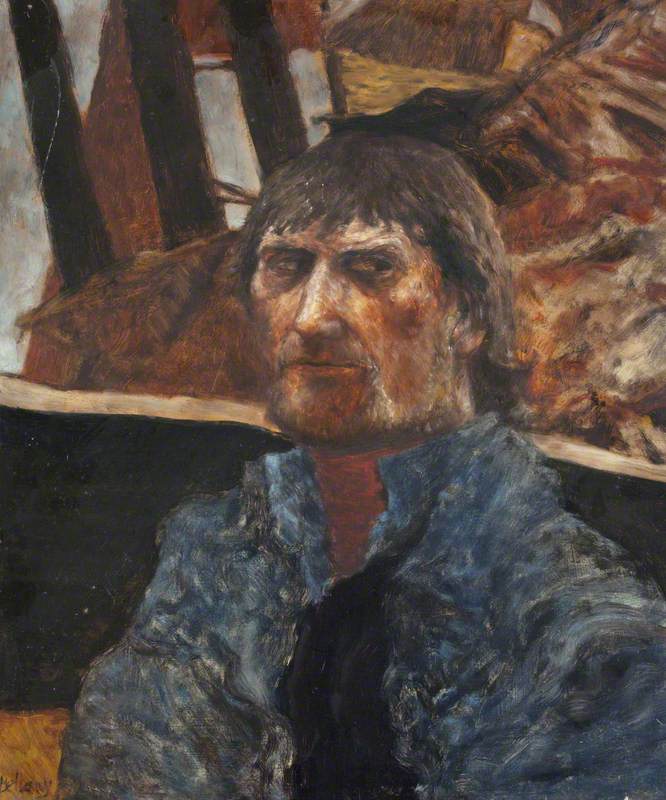 John Bellany (1942–2013)
John Bellany (1942–2013) -
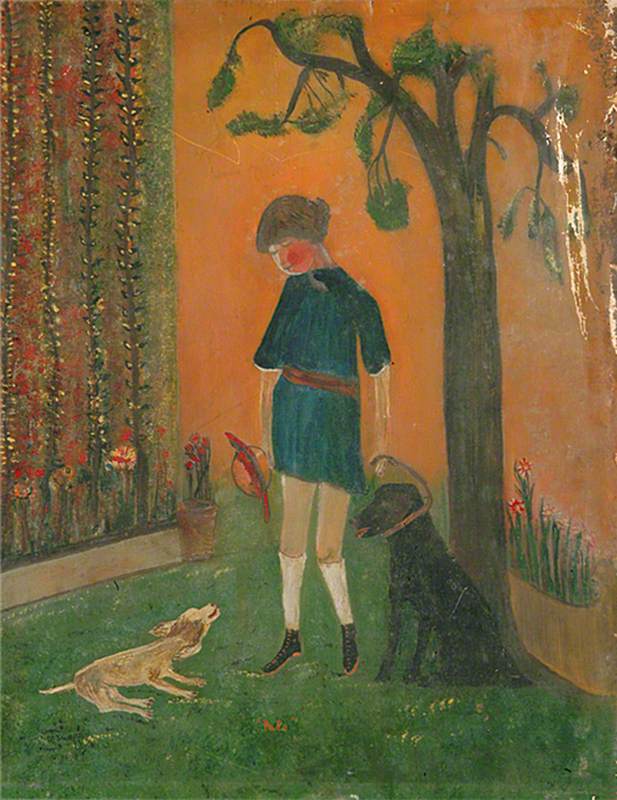 Henry Stockley (1892–1982)
Henry Stockley (1892–1982) -
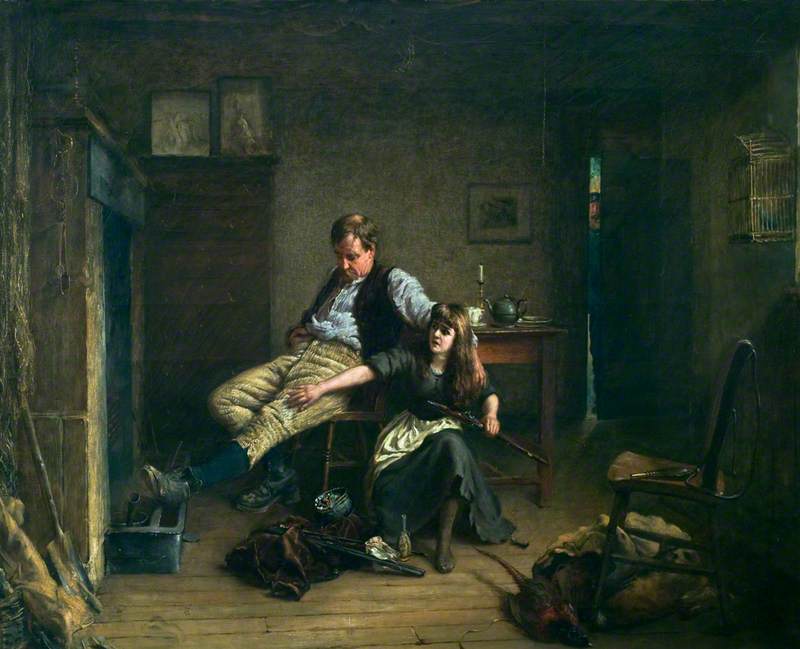 Archibald John Stuart-Wortley (1849–1905)
Archibald John Stuart-Wortley (1849–1905) -
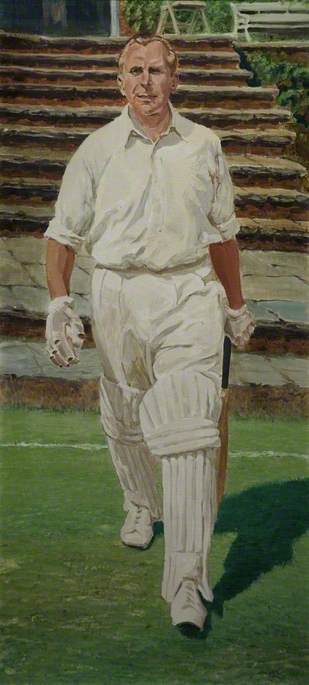 John Lowe (b.1919)
John Lowe (b.1919) -
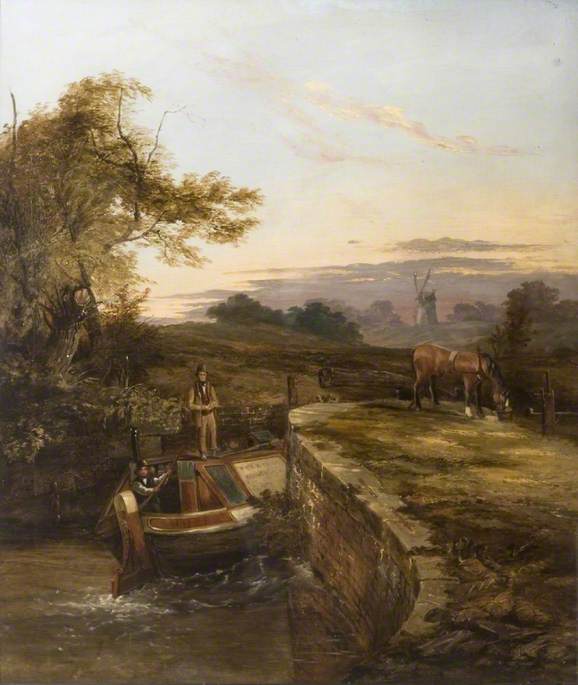 unknown artist
unknown artist -
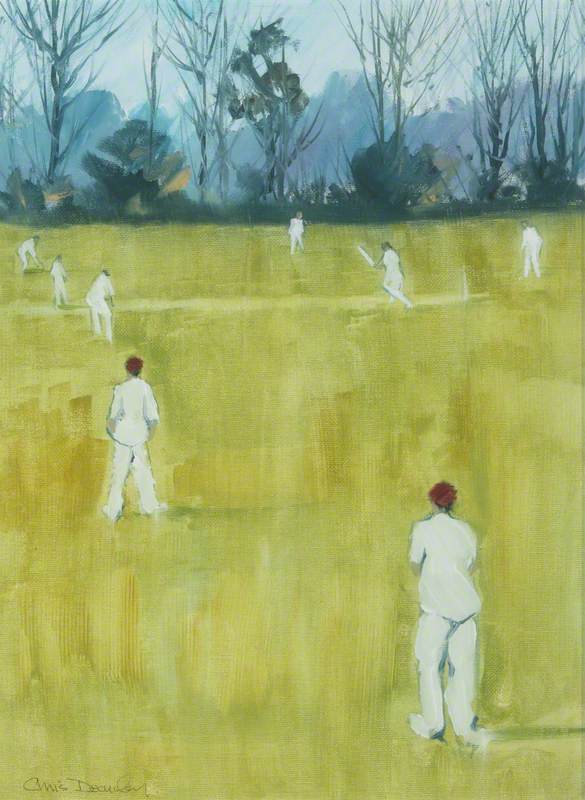 Chris Deavley
Chris Deavley -
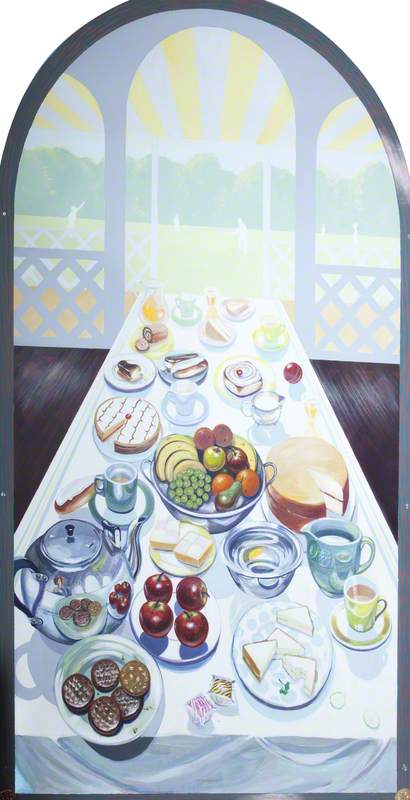 Anna Todd (b.1964)
Anna Todd (b.1964) -
 Lawrence Toynbee (1922–2002)
Lawrence Toynbee (1922–2002) - View all 24


